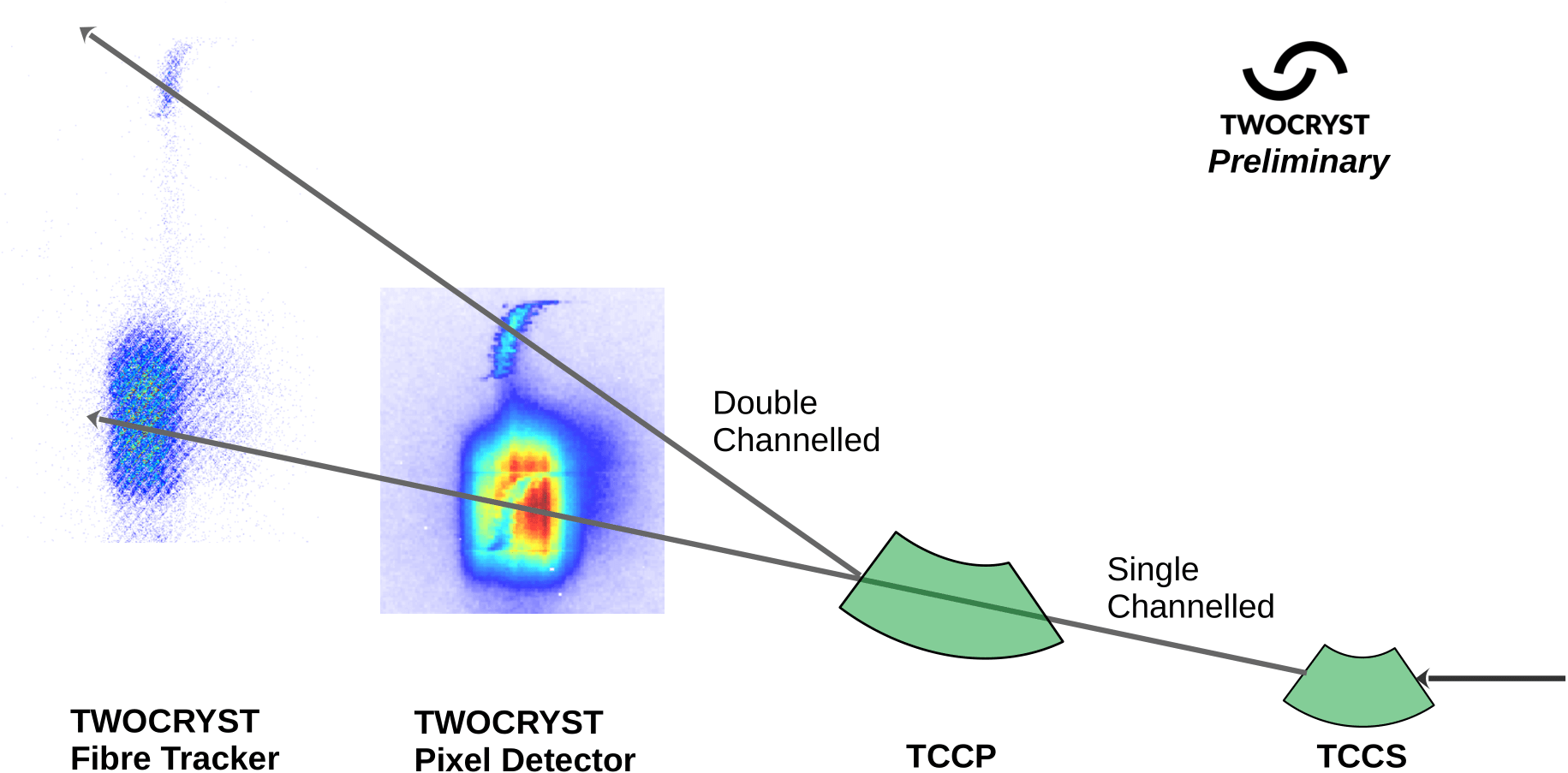TWOCRYST: A Double-Crystal Experiment at the LHC
TWOCRYST is a proof-of-principle experiment at CERN’s Large Hadron Collider (LHC), designed to demonstrate the feasibility of a novel experimental concept: using two bent crystals and a fixed target to study the fundamental properties of short-lived charm baryons—such as the Λc+—in particular their electric and magnetic dipole moments (EDM/MDM).
Because charm baryons decay extremely quickly—within about 10⁻¹³ seconds—conventional techniques using magnetic fields are not suited to induce measurable spin precession. A new experimental proposal, ALADDIN, explores an alternative approach: exploiting the strong electromagnetic fields inside bent silicon crystals to steer the Λc+ particles to induce a strong deflection, which - in turn - induces observable spin precession even within their extremely short lifetimes.
To assess whether this concept can be translated into a full-scale experiment, a dedicated proof-of-principle experiment was developed. TWOCRYST was therefore conceived to validate the operational feasibility, crystal performance, and alignment strategies required for a double-crystal fixed-target experiment inside the LHC. It provides a fully operational test stand with all key components to collect critical data and practical experience to support the proposal of the ALADDIN experiment for possible future implementation into the LHC.
TWOCRYST was installed in early 2025 into the LHC and features three key components for particle manipulation: - A first, short, bent crystal (TCCS) extracts protons from the beam halo, - A fixed target, identical to the one that would be used to produce charmed baryons from these protons, - A second, long, bent crystal (TCCP) steers the particles of interest, enabling precession effects.
 Figure: The TWOCRYST bent crystal assemblies (TCCS and TCCP) used for beam splitting (left) and to induce precession (TCCP).
Figure: The TWOCRYST bent crystal assemblies (TCCS and TCCP) used for beam splitting (left) and to induce precession (TCCP).
Downstream of the crystals, TWOCRYST employs two 2D detectors housed in Roman Pots—a silicon pixel detector and a fiber tracker—to identify channelling signatures.
First Observation of Double Crystal Channelling in the LHC
In June 2025, TWOCRYST achieved a major milestone by demonstrating double crystal channelling for the first time in the LHC, and at the unprecedented proton energy of 450 GeV. Clear signals of double-channelling were recorded in both detectors, validating the core principle of the ALADDIN experiment.
The experimental observations are in excellent agreement with simulations, providing strong validation of both the alignment strategy and the beam dynamics modelling. The data collected will allow for a quantification of the channelling efficiency of the precession crystal at particle energies relevant for ALADDIN. This will allow scientists to draw conclusions on the time it will require to collect the required data for the ALADDIN physics program.
 Figure: 2D distribution of particles recorded on 22 June 2025, showing clear evidence of double crystal channelling in the LHC. The two distinct spots correspond to single-channelled particles (after TCCS) and double-channelled particles (after TCCS and TCCP).
Figure: 2D distribution of particles recorded on 22 June 2025, showing clear evidence of double crystal channelling in the LHC. The two distinct spots correspond to single-channelled particles (after TCCS) and double-channelled particles (after TCCS and TCCP).
About TWOCRYST
TWOCRYST is carried out by an international collaboration of over 60 scientists from 7 countries, and is part of the Physics Beyond Colliders (PBC) Fixed-Target initiative at CERN. Its successful completion will lay the foundation for a full-scale LHC experiment to probe new physics via precise measurements of charm baryon dipole moments.
Contact Information
Pascal Hermes (TWOCRYST Project Lead)
pascal . hermes [at] cern . ch
